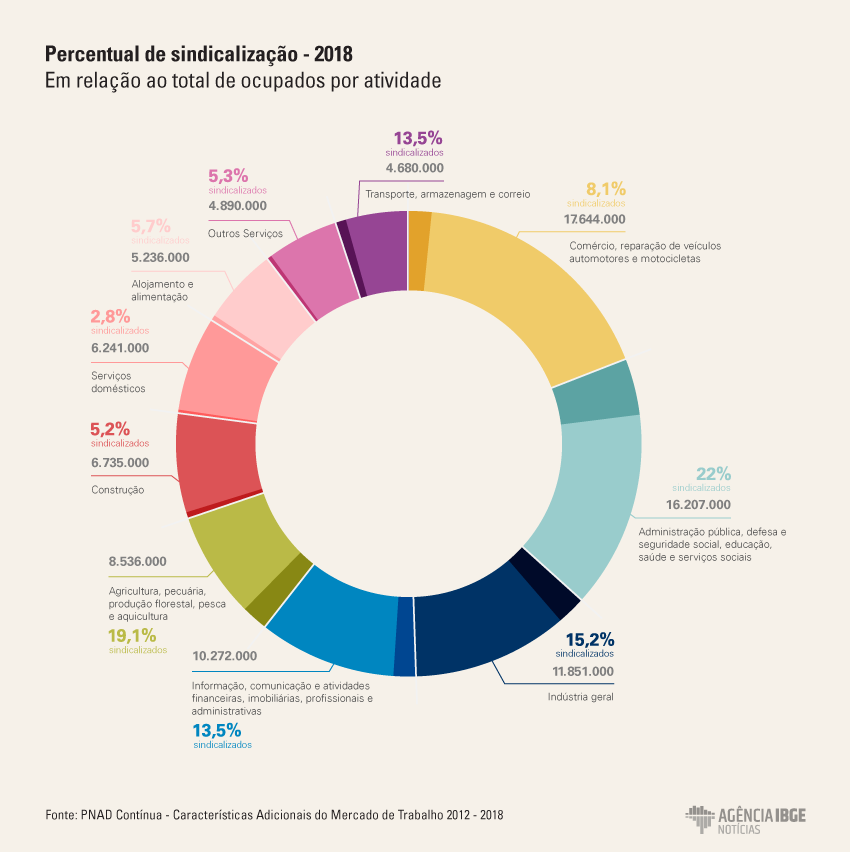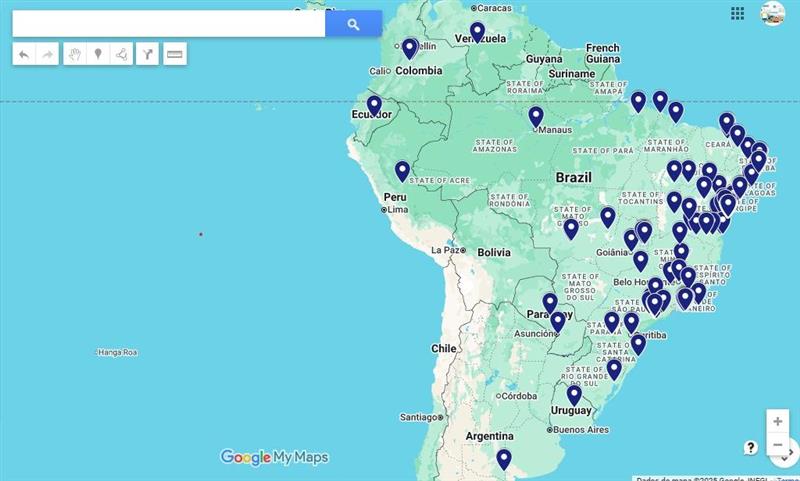Continuous PNAD
Unionization rate drops to 12.5% in 2018 and reaches the lowest level in seven years
December 18, 2019 10h00 AM | Last Updated: December 18, 2019 04h43 PM

The number of unionized workers reached the lowest level in the last seven years. Of the 92.3 million employed persons in 2018 in the country, 11.5 million were union members. The unionization rate was 12.5%, the lowest since 2012, when it reached 16.1%, according to the Continuous National Household Sample Survey (Continuous PNAD), released today (18) by the IBGE.
The study showed that the recovery of the employed population, with growth of 1.4% in 2018, did not bring together with it unionization growth. On the contrary: there was a 11.9% reduction of union members from 2017 to 2018, representing 1.5 million fewer people and the most intense drop since the beginning of the series.
The survey also analyzed the number of unionized people in relation to activity groups. Nine of the ten categories had the lowest unionization rate since 2012.
The Transportation, storage and mailing sector had the biggest loss, going from 17.5% in 2017 to 13.5% in 2018. Another activity that presented decrease in unionization was Lodging and Food, from 6.8 % to 5.7% in one year.
“Those are two activities that have boosted employment: transportation, because of applications, and food, due to the phenomenon of food hawkers, such as people who sell "quentinha", homemade takeaway food, which is cheaper than restaurant food. Both activities grew with more precarious workforce, usually workers without a formal contract or self-employed ones, who are usually not engaged in unions , ”explained IBGE researcher Ms. Adriana Beringuy.
"So unionization drop in those two activities, especially in the case of transportation, may be associated with precarious work," she added.
Another group of activities in which the number of union members decreased was agriculture, livestock, forestry, fisheries and aquaculture, from 21.1% in 2017 to 19.1% in 2018. “Agriculture is employing less and less as a result of mechanization and people leaving the countryside and this has affected the unionization rate of this activity, ”said Ms. Beringuy.
The general industry, in turn, a traditionally unionized group of activities, decreased from 17.1% to 15.2% in a year. “We do not know to what extent precarious work is also affecting the Industry, which has always generated jobs with a formal contract. So the decrease in unionization rate may be due to employment decrease itself,” says the researcher.

Public sector still leads unionization
Union membership also varied according to employment type and categories of employment type. Although 12% of the employed population in 2018 was employed in the private sector without a formal contract, this category had one of the lowest unionization estimates (4.5%). Public sector employees recorded the largest (25.7%), although they also represent 12% of the employed population. The unionization rate in the public sector also decreased from 27.3% in 2017 to 25.7% in 2018.
“In the public sector there are more educated workers, and unionization tends to grow with increasing schooling. Moreover, this sector includes health and education segments, whose unions are pretty strong, ”explained Ms. Beringuy.

















